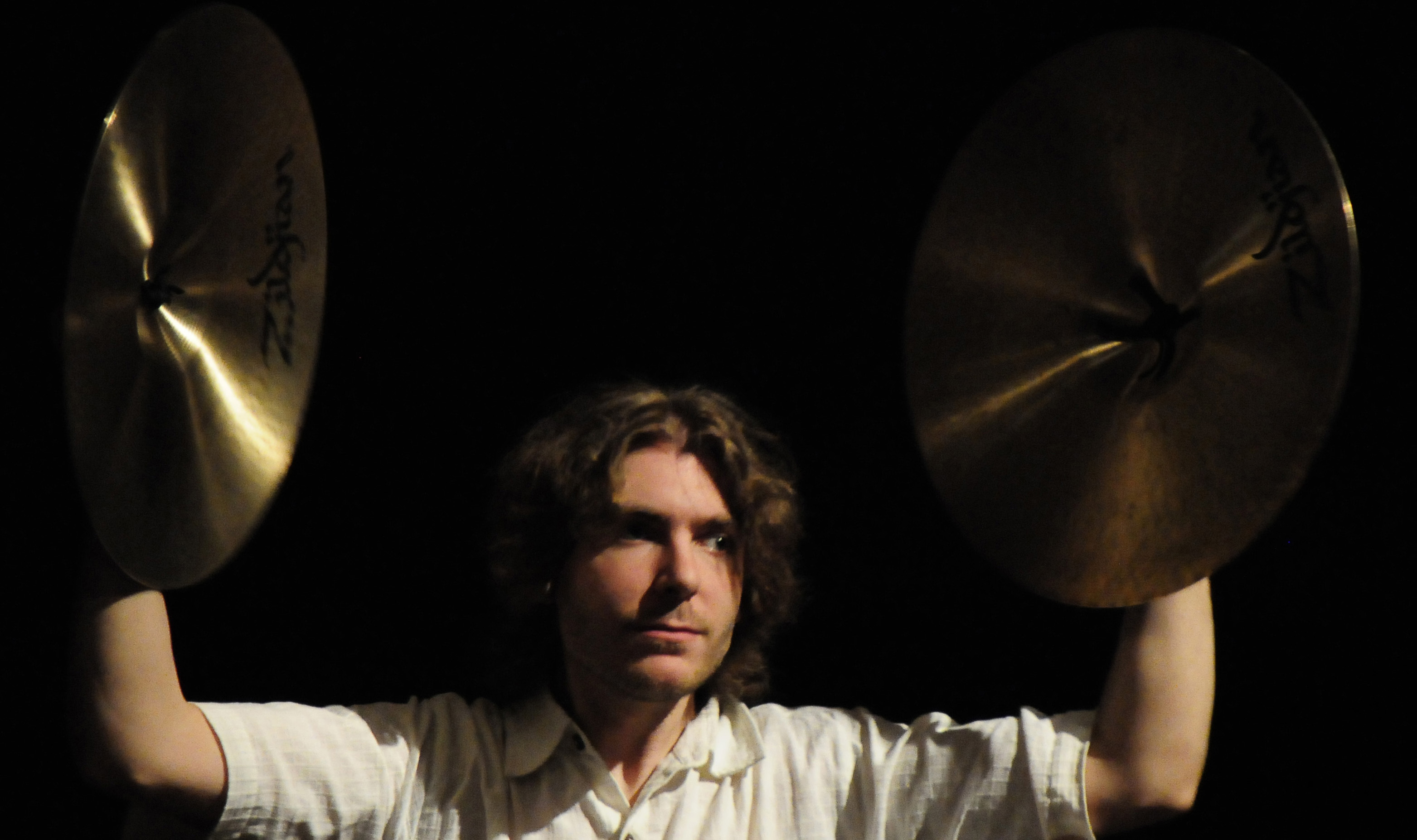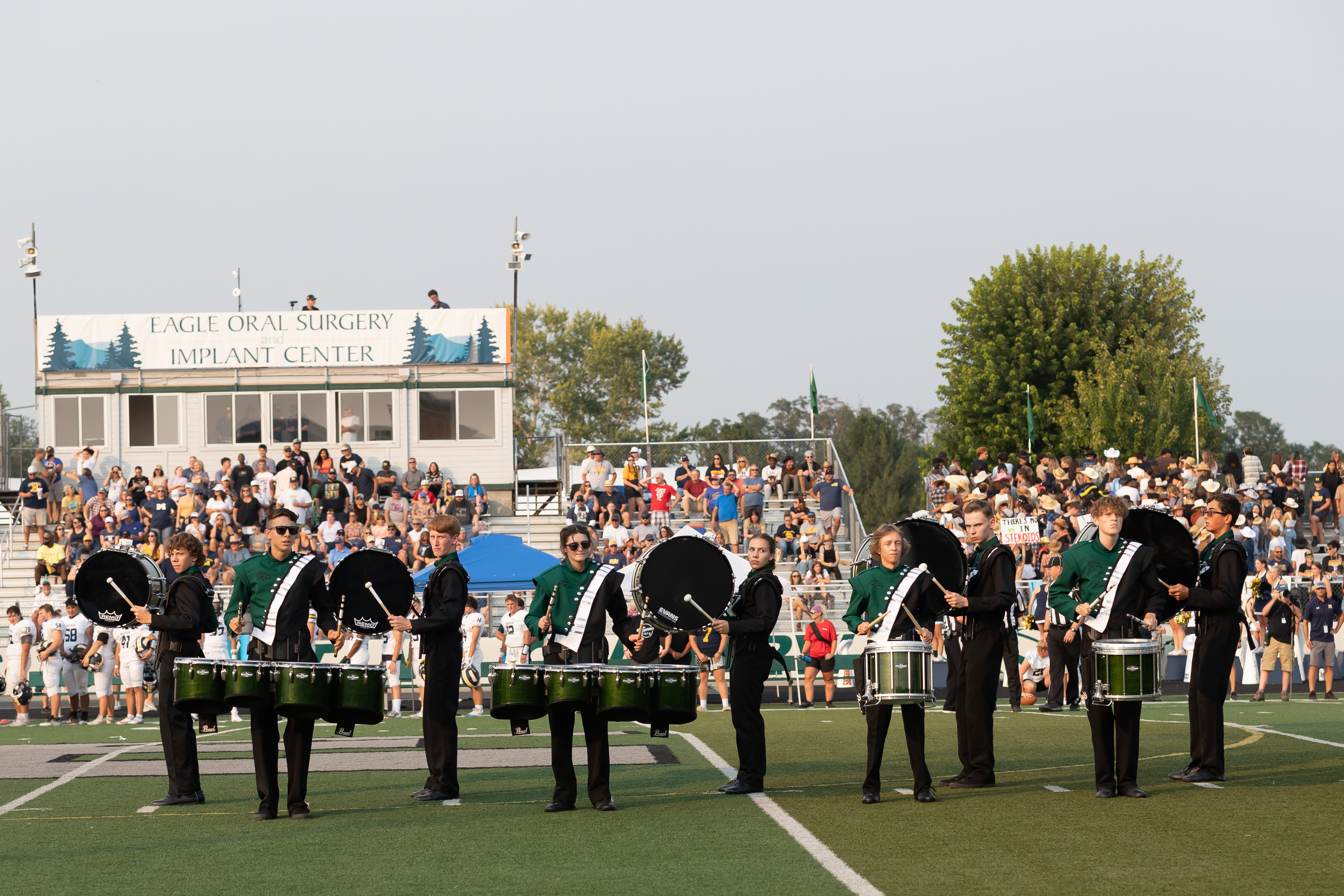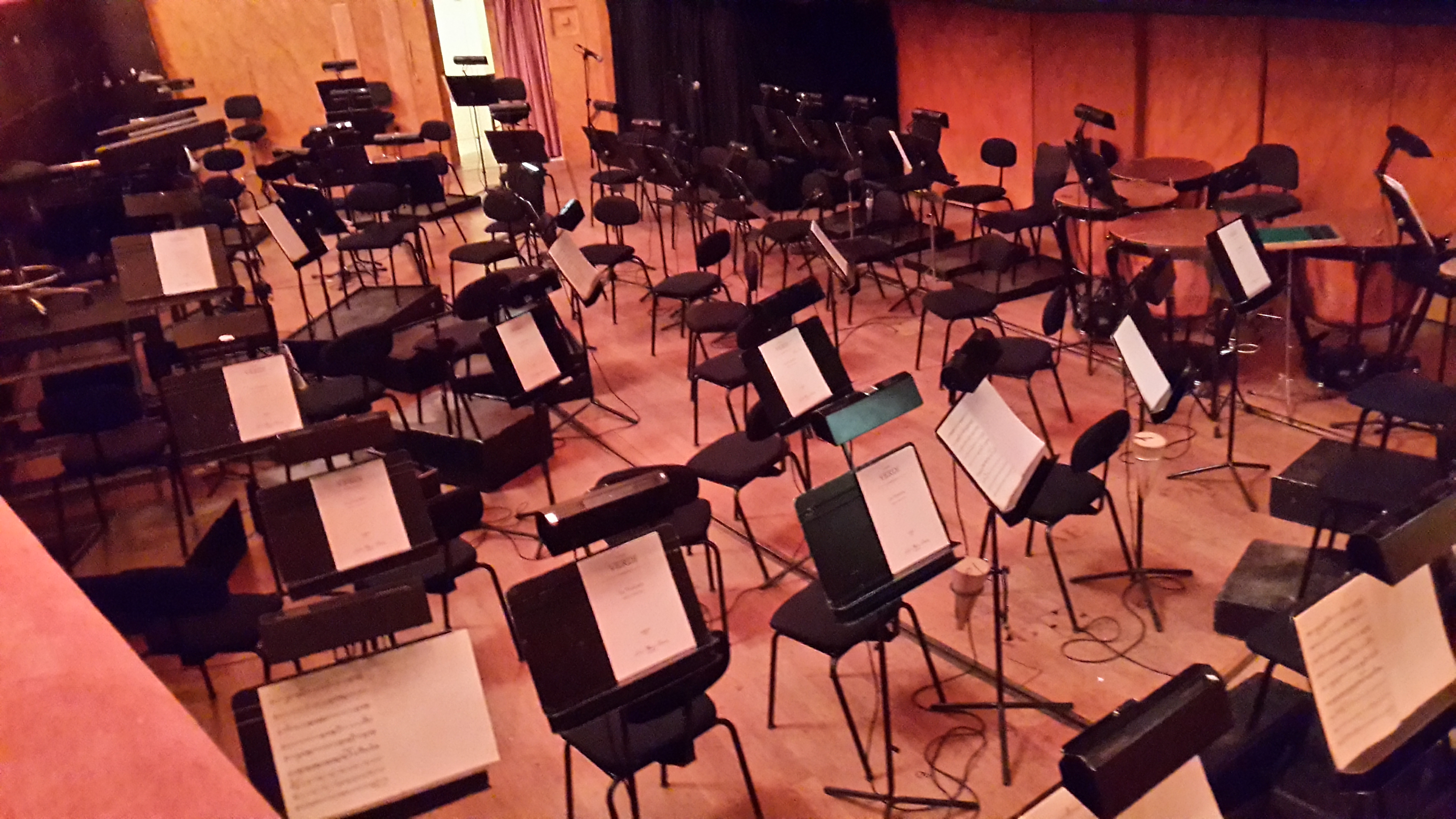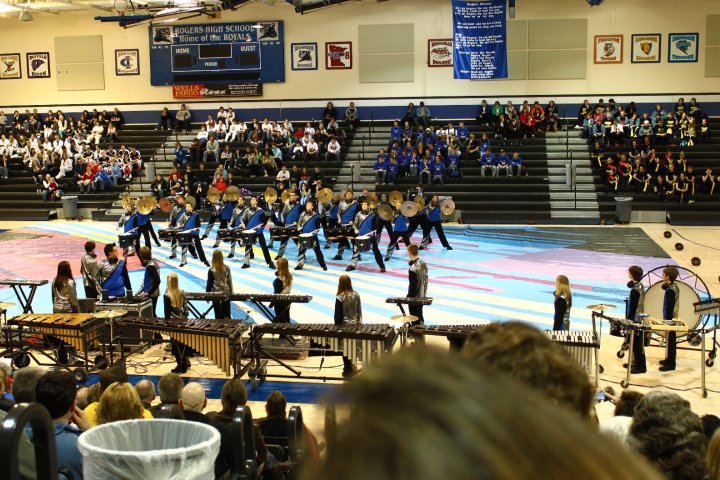|
Clash Cymbal
Clash cymbals (also called concert cymbals, orchestral cymbals, or crash cymbals) are cymbals played in matched pairs by holding one cymbal in each hand and striking the two together. To differentiate this type of cymbal from a suspended cymbal, they are also called hand cymbals. Terminology In musical scores, clash cymbals are normally indicated as ''cymbals'' or sometimes simply ''C.C.'' If another type of cymbal, for example, a suspended cymbal, is required in an orchestral score, then for historical reasons this is often also indicated ''cymbals''. Some composers and arrangers use the plural ''cymbals'' or ''crash cymbals'' to indicate clash cymbals, with the singular ''cymbal'' to indicate a suspended cymbal. Composers will often condense the clash cymbals and a suspended cymbal into the same part. There are a number of techniques used to indicate which is desired. Whenever ''with stick'' or ''with mallet'' is written, a suspended cymbal is used. A return to clash cymbals ca ... [...More Info...] [...Related Items...] OR: [Wikipedia] [Google] [Baidu] |
Cymbal
A cymbal is a common percussion instrument. Often used in pairs, cymbals consist of thin, normally round plates of various alloys. The majority of cymbals are of indefinite pitch, although small disc-shaped cymbals based on ancient designs sound a definite note (such as crotales). Cymbals are used in many ensembles ranging from the orchestra, percussion ensembles, jazz bands, heavy metal bands, and marching groups. Drum kits usually incorporate at least a crash, ride, or crash/ride, and a pair of hi-hat cymbals. A player of cymbals is known as a cymbalist. Etymology and names The word cymbal is derived from the Latin , which is the latinisation , which in turn derives . In orchestral scores, cymbals may be indicated by the French ; German , , , or ; Italian or ; and Spanish . Many of these derive from the word for plates. History Cymbals have existed since ancient times. Representations of cymbals may be found in reliefs and paintings from Armenian Highlands (7t ... [...More Info...] [...Related Items...] OR: [Wikipedia] [Google] [Baidu] |
Marching Percussion
Marching percussion instruments are percussion instruments (usually drums, such as snare, bass, and tenor drums) specially designed to be played while moving. This is achieved by attaching the drum(s) to a special harness (also called a carrier or rack) worn by the drummer, although not all marching bands use such harnesses and instead use traditional baldrics to sling their drums (the British Armed Forces, for instance, still use the old style of slung drums). The drums are designed and tuned for maximum articulation and projection of sound, as marching activities are almost always outdoors or in large interior spaces. These instruments are used by marching bands, corps of drums, drum and bugle corps, fanfare bands, indoor percussion ensembles, and pipe bands. A marching percussion ensemble is frequently known as a "drumline" or "battery." Breakdown Drumline A "''drumline''," also known as the "''battery''," or "''batterie''," is a section of percussion instruments usually ... [...More Info...] [...Related Items...] OR: [Wikipedia] [Google] [Baidu] |
Leather
Leather is a strong, flexible and durable material obtained from the tanning (leather), tanning, or chemical treatment, of animal skins and hides to prevent decay. The most common leathers come from cattle, sheep, goats, equine animals, buffalo, pigs and hogs, ostriches, and aquatic animals such as seals and alligators. Leather can be used to make a variety of items, including clothing, footwear, handbags, furniture, tools and sports equipment, and lasts for decades. Leather making has been practiced for more than 7,000 years and the leading producers of leather today are China and India. Critics of tanneries claim that they engage in unsustainable practices that pose health hazards to the people and the environment near them. Production processes The leather manufacturing process is divided into three fundamental subprocesses: preparatory stages, tanning, and crusting. A further subprocess, finishing, can be added into the leather process sequence, but not all leathers ... [...More Info...] [...Related Items...] OR: [Wikipedia] [Google] [Baidu] |
Chinese New Year Seattle 2007 - 25
Chinese may refer to: * Something related to China * Chinese people The Chinese people, or simply Chinese, are people or ethnic groups identified with Greater China, China, usually through ethnicity, nationality, citizenship, or other affiliation. Chinese people are known as Zhongguoren () or as Huaren () by ..., people identified with China, through nationality, citizenship, and/or ethnicity **Han Chinese, East Asian ethnic group native to China. **''Zhonghua minzu'', the supra-ethnic concept of the Chinese nation ** List of ethnic groups in China, people of various ethnicities in contemporary China ** Ethnic minorities in China, people of non-Han Chinese ethnicities in modern China ** Ethnic groups in Chinese history, people of various ethnicities in historical China ** Chinese nationality law, Nationals of the People's Republic of China ** Taiwanese nationality law, Nationals of the Republic of China ** Overseas Chinese, Chinese people residing outside the territories ... [...More Info...] [...Related Items...] OR: [Wikipedia] [Google] [Baidu] |
Drum Kit
A drum kit or drum set (also known as a trap set, or simply drums in popular music and jazz contexts) is a collection of drums, cymbals, and sometimes other Percussion instrument, auxiliary percussion instruments set up to be played by one person. The drummer typically holds a pair of matching Drum stick, drumsticks or special wire or nylon brushes; and uses their feet to operate hi-hat and bass drum pedals. A standard kit usually consists of: * A snare drum, mounted on a snare drum stand, stand * A bass drum, played with a percussion mallet, beater moved by one or more foot-operated pedals * One or more Tom drum, tom-toms, including Rack tom, rack toms or floor tom, floor toms * One or more Cymbal, cymbals, including a ride cymbal and crash cymbal * Hi-hat cymbals, a pair of cymbals that can be played with a foot-operated pedal The drum kit is a part of the standard rhythm section and is used in many types of popular and traditional music styles, ranging from rock music ... [...More Info...] [...Related Items...] OR: [Wikipedia] [Google] [Baidu] |
Pit Orchestra
A pit orchestra is a type of orchestra that accompanies performers in Musical theatre, musicals, operas, ballets, and other shows involving music. The term was also used for orchestras accompanying silent movies when more than a piano was used. In performances of operas and ballets, the pit orchestra is typically similar in size to a symphony orchestra, though it may contain smaller string and brass sections, depending upon the piece. Such orchestras may vary in size from approximately 30 musicians (early Baroque and Classical opera) to as many as 90–100 musicians (Wagnerian opera). However, because of financial, spatial, and volume concerns, current musical theatre pit orchestras are considerably smaller (20–30 musicians at most, including a maximum of around ten string instruments, string players). Description Typically, pit orchestras play in a lowered area in front of the stage called an orchestra pit, rather than being on the stage as for a concert. Inside the pit, the c ... [...More Info...] [...Related Items...] OR: [Wikipedia] [Google] [Baidu] |
Vaudeville
Vaudeville (; ) is a theatrical genre of variety entertainment which began in France in the middle of the 19th century. A ''vaudeville'' was originally a comedy without psychological or moral intentions, based on a comical situation: a dramatic composition or light poetry, interspersed with songs and dances. Vaudeville became popular in the United States and Canada from the early 1880s until the early 1930s, while changing over time. In some ways analogous to music hall from Victorian Britain, a typical North American vaudeville performance was made up of a series of separate, unrelated acts grouped together on a common bill. Types of acts have included popular and classical musicians, singers, dancers, comedians, trained animals, magicians, ventriloquists, strongmen, female and male impersonators, acrobats, clowns, illustrated songs, jugglers, one-act plays or scenes from plays, athletes, lecturing celebrities, minstrels, and films. A vaudeville performer ... [...More Info...] [...Related Items...] OR: [Wikipedia] [Google] [Baidu] |
Drum Stick
A drum stick (or drumstick) is a type of percussion mallet used particularly for playing snare drum, drum kit, and some other percussion instruments, and particularly for playing unpitched percussion. Specialized beaters used on some other percussion instruments, such as the metal beater used with a triangle or the mallets used with tuned percussion (such as xylophone and timpani), are not normally referred to as drumsticks. Drumsticks generally have all of the following characteristics: * They are normally supplied and used in pairs. * They may be used to play at least some sort of drum (as well as other instruments). * They are normally used only for unpitched percussion. Construction The archetypical drumstick is turned from a single piece of wood, most commonly of hickory, less commonly of maple, and least commonly but still in significant numbers, of oak. Drumsticks of the traditional form are also made from metal, carbon fibre, and other modern materials. The '' ... [...More Info...] [...Related Items...] OR: [Wikipedia] [Google] [Baidu] |
Hi-hat Stand
A hi-hat (hihat, high-hat, etc.) is a combination of two cymbals and a pedal, all mounted on a metal stand. It is a part of the standard drum kit used by drummers in many styles of music including rock, pop, jazz, and blues. Hi-hats consist of a matching pair of small to medium-sized cymbals mounted on a stand, with the two cymbals facing each other. The bottom cymbal is fixed and the top is mounted on a rod which moves the top cymbal toward the bottom one when the pedal is depressed (a hi-hat that is in this position is said to be "closed" or "closed hi-hats"). The hi-hat evolved from a "sock cymbal", a pair of similar cymbals mounted at ground level on a hinged, spring-loaded foot apparatus. Drummers invented the first sock cymbals to enable one drummer to play multiple percussion instruments at the same time. Over time these became mounted on short stands—also known as "low-boys"—and activated by pedals similar to those used in modern hi-hats. When extended upward rough ... [...More Info...] [...Related Items...] OR: [Wikipedia] [Google] [Baidu] |
Drum Kit
A drum kit or drum set (also known as a trap set, or simply drums in popular music and jazz contexts) is a collection of drums, cymbals, and sometimes other Percussion instrument, auxiliary percussion instruments set up to be played by one person. The drummer typically holds a pair of matching Drum stick, drumsticks or special wire or nylon brushes; and uses their feet to operate hi-hat and bass drum pedals. A standard kit usually consists of: * A snare drum, mounted on a snare drum stand, stand * A bass drum, played with a percussion mallet, beater moved by one or more foot-operated pedals * One or more Tom drum, tom-toms, including Rack tom, rack toms or floor tom, floor toms * One or more Cymbal, cymbals, including a ride cymbal and crash cymbal * Hi-hat cymbals, a pair of cymbals that can be played with a foot-operated pedal The drum kit is a part of the standard rhythm section and is used in many types of popular and traditional music styles, ranging from rock music ... [...More Info...] [...Related Items...] OR: [Wikipedia] [Google] [Baidu] |
Indoor Percussion Ensemble
An indoor percussion ensemble or indoor drumline is a type of marching ensemble consisting of battery and front ensemble instruments. It differs itself from a traditional percussion ensemble by not only on musical performance, but on theatrics and marching. Although most indoor percussion ensembles are affiliated with high schools (also known as scholastic groups), there are also many independent groups that draw participants from a large area and are independently funded. Independent groups typically start rehearsing in October, while high school groups typically start after their fall marching band season ends. Because of this, the activity is often called winter percussion or winterline. History The athletic arts were looking for a sport that could challenge and excite skilled musicians, so they started creating their own styles all over the world. Since then, marching percussion has advanced and moved into auditoriums and gymnasiums as percussion ensembles looked for ways ... [...More Info...] [...Related Items...] OR: [Wikipedia] [Google] [Baidu] |










